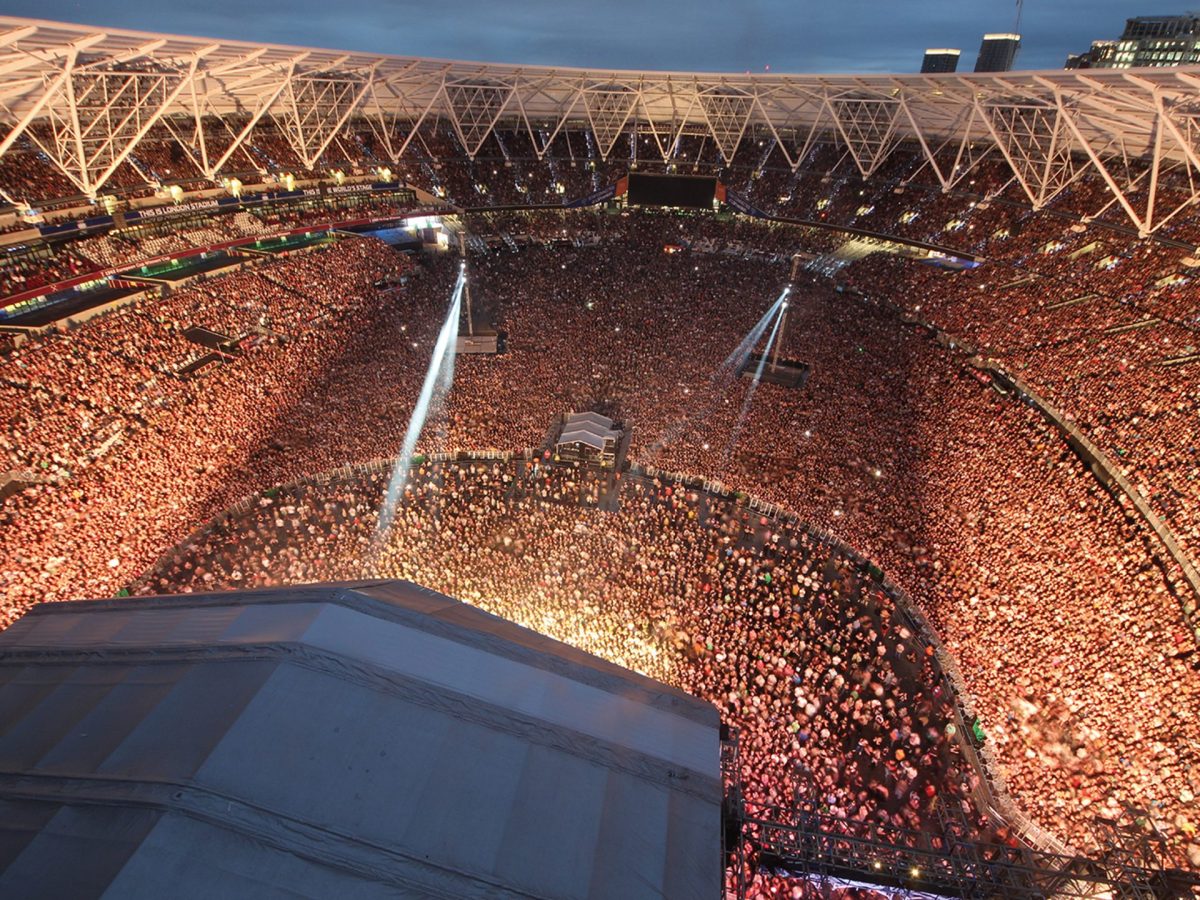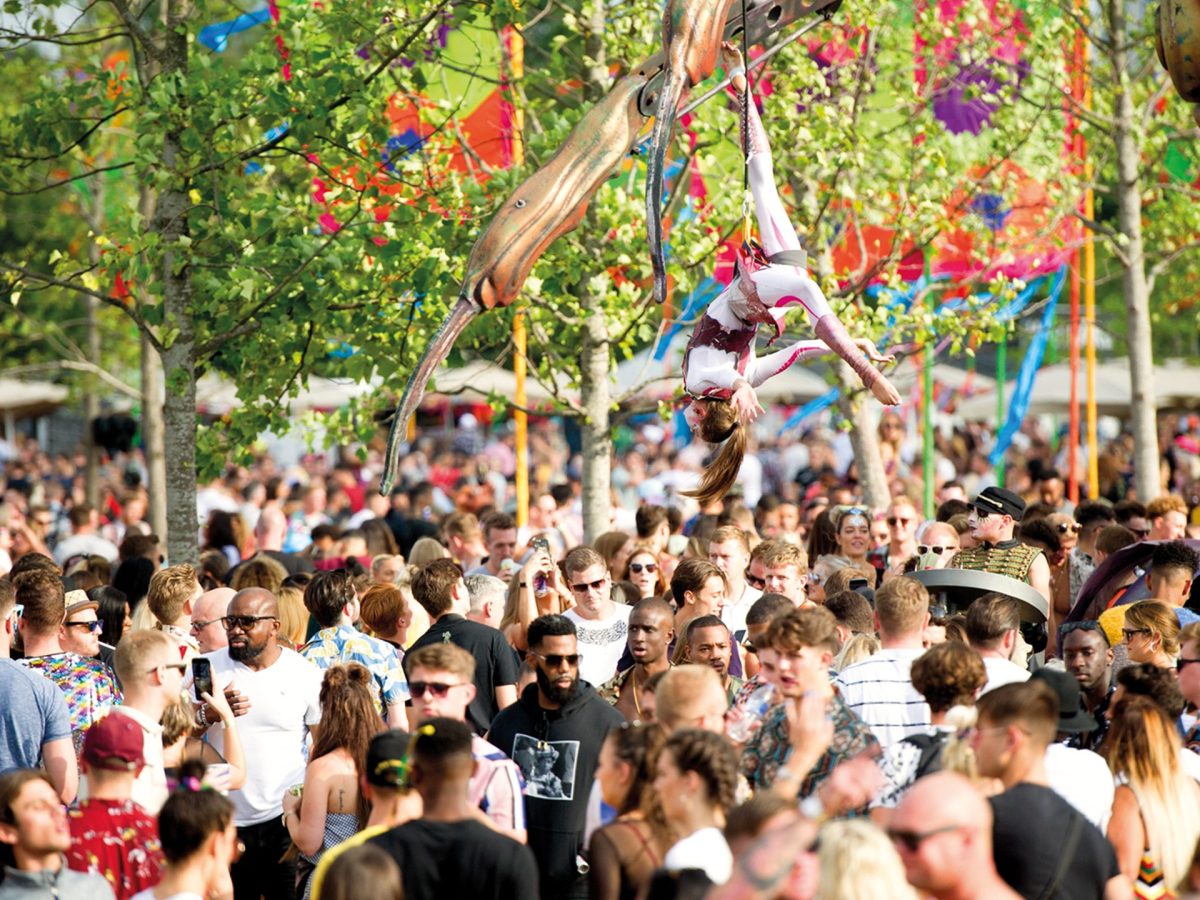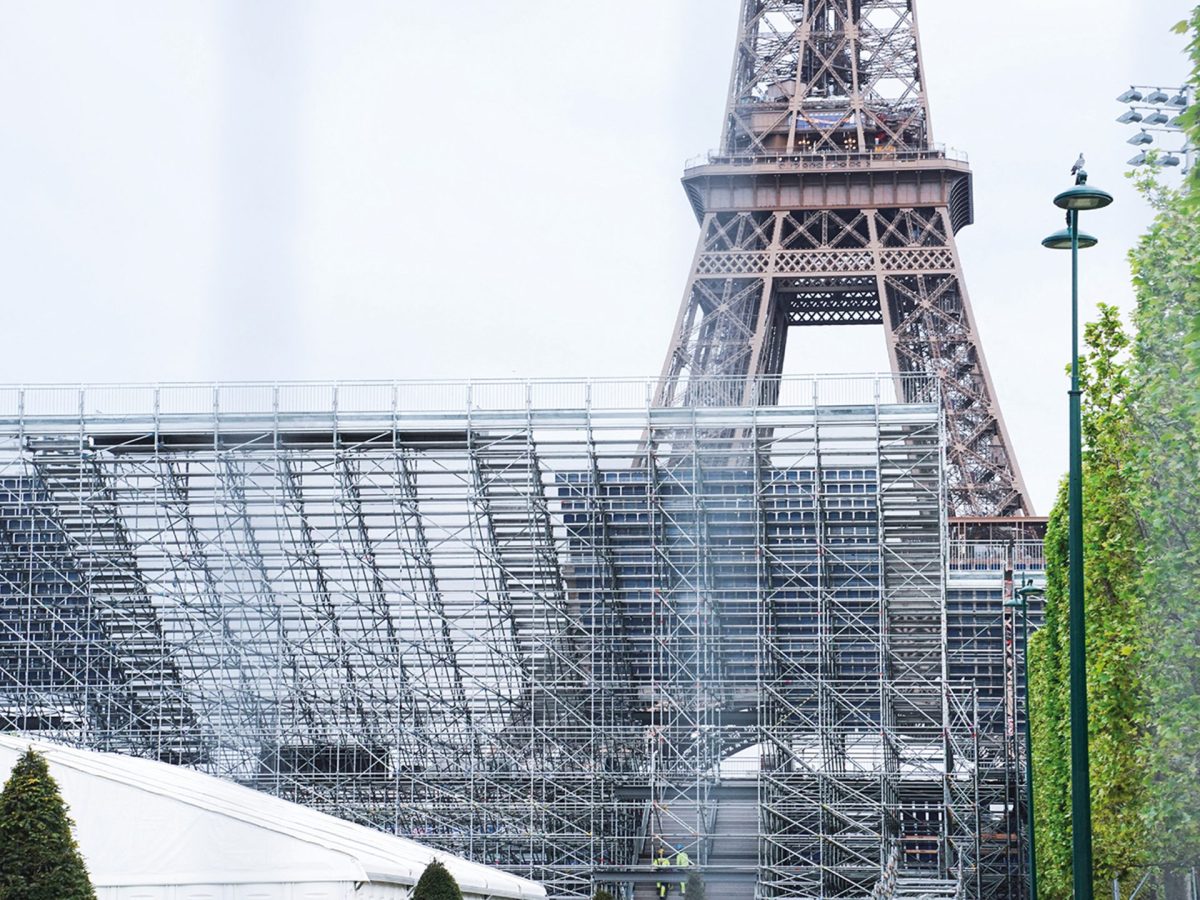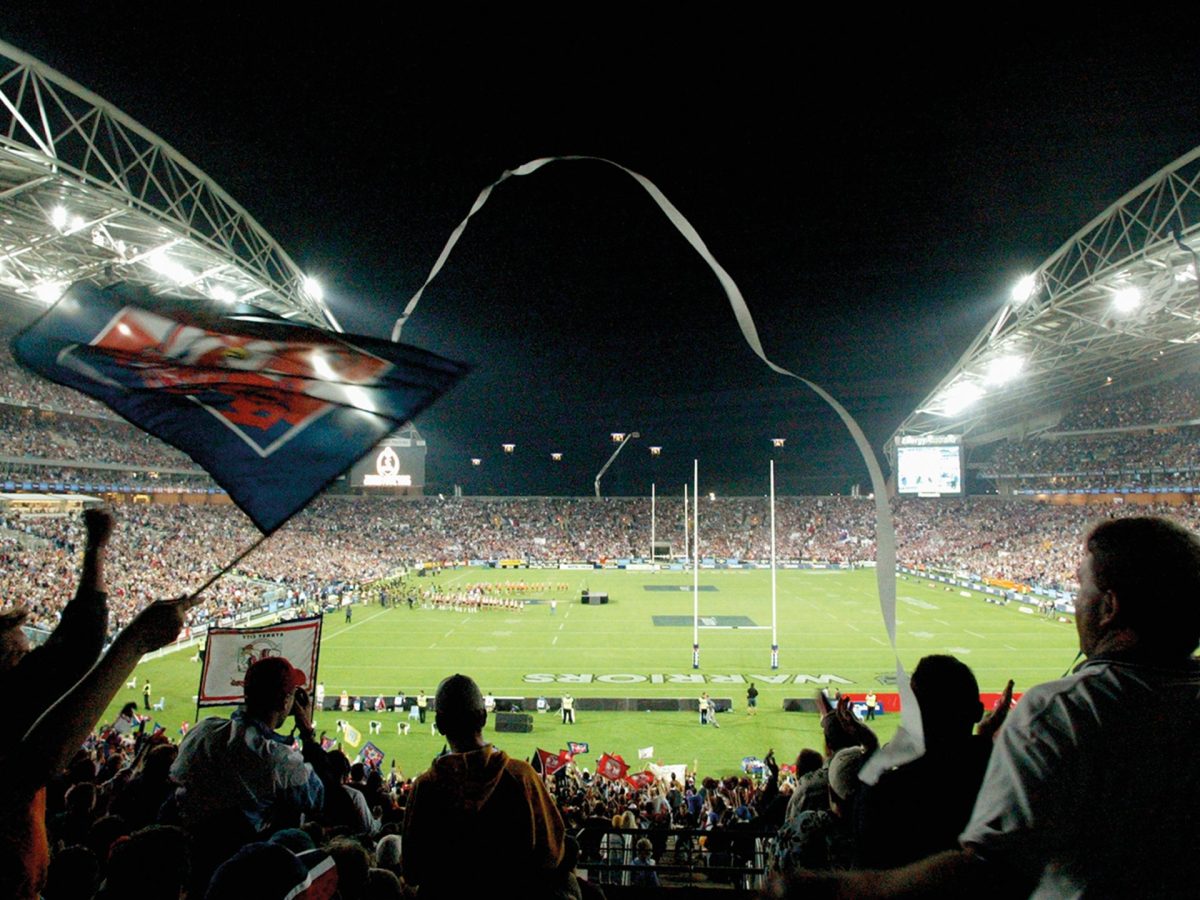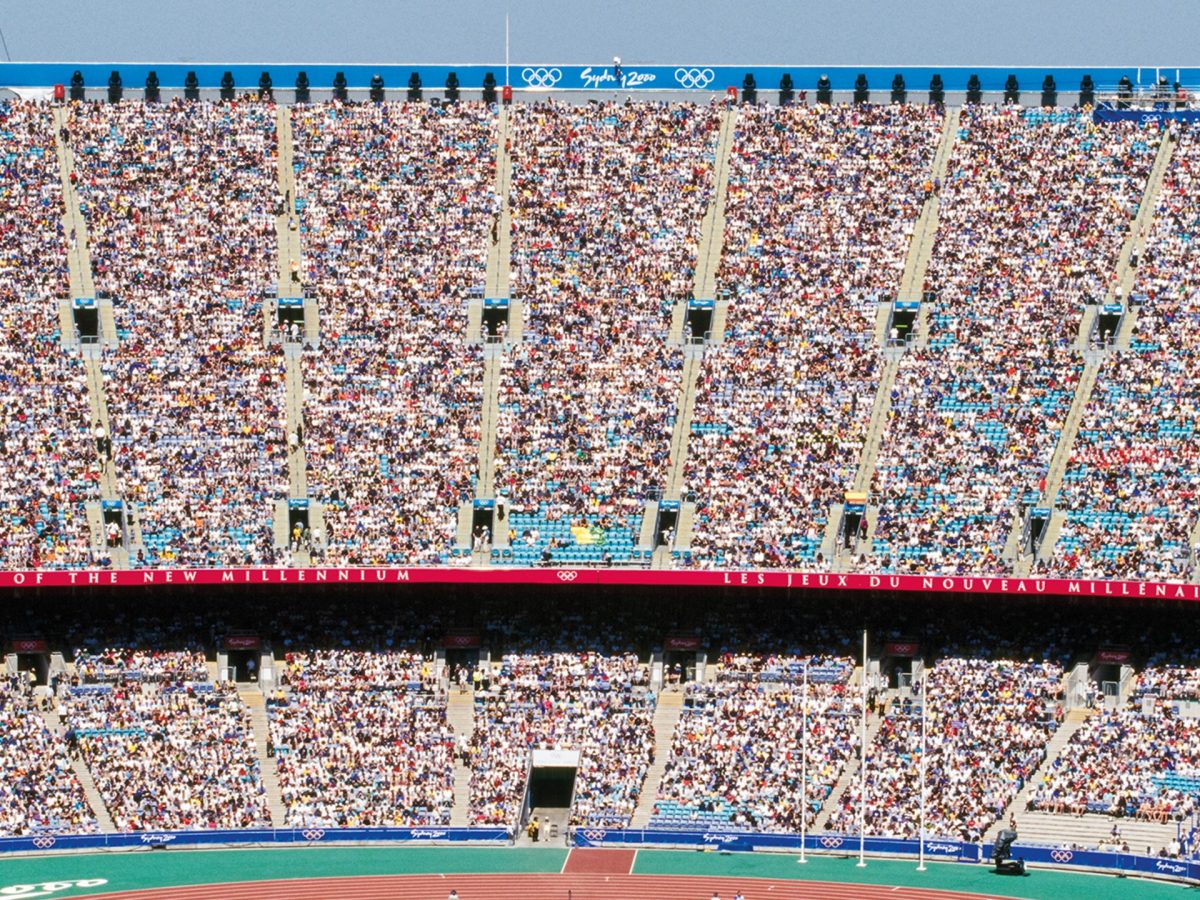August 9, 2024
Games Go Green, Lean and Digitized: The Evolution of Sustainability in the Olympics
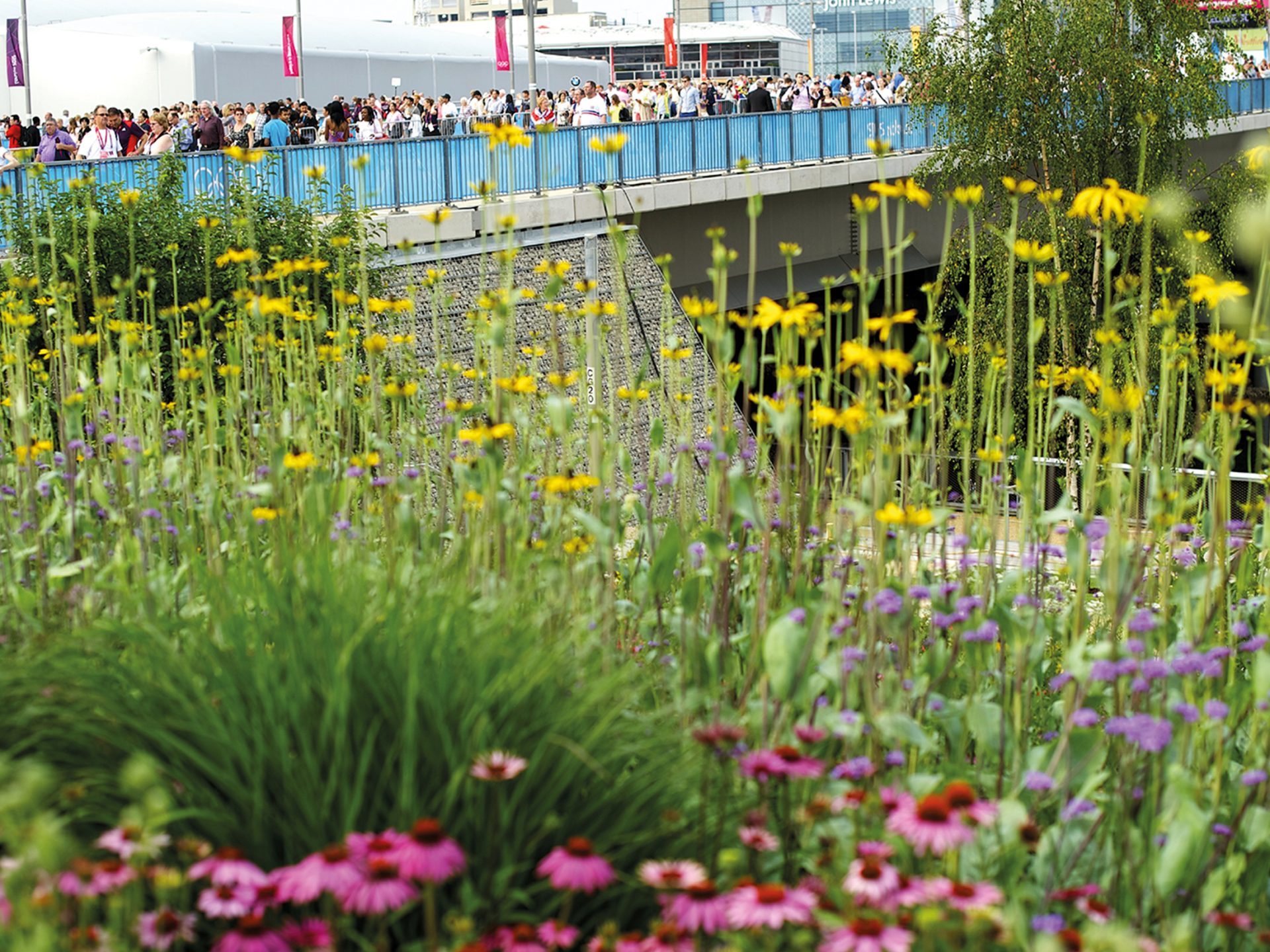
It’s no secret that hosting Olympics and Paralympics requires multi-billion-dollar investments. Often, by showcasing cities and nations in all their splendor, by attracting tourists and by inspiring new generations of athletes, the benefits outweigh the costs.
But not always. In the past, many host cities have overspent on Olympic facilities; or they’ve failed to consider the future legacy of the venues they’ve built. The Sydney 2000 Olympics represented a key shift in approach, and Populous played a major role in those Games, designing venues, infrastructure and overlay. The showpiece of the event was the main Olympic stadium in Sydney, now known as Accor Stadium.
“The challenge was to design a venue which could accommodate 115,000 people during the Olympics but which could be reduced down afterward to operate as a sustainable, long-term venue with 85,000 seats,” explains Paul Henry, managing director of Populous’ Asia-Pacific region, who spearheaded the project. “The aim was to ensure the stadium’s maximum usage beyond the Games by enabling it to host multiple event types with ample crowd capacity. To this day, it remains a model of green, functional, cost-effective design and is still regarded as one of the most environmentally sustainable stadia in the world. For example, rainwater is recycled from the roof into underground storage tanks to irrigate the pitch, and wind and solar energy are utilized for natural cooling and heating.”
"London’s main Olympic stadium has regenerated that entire area of east London, with new housing, offices, arts venues, transport links and a huge park."
In the intervening years, Accor Stadium has completely regenerated the once industrial area of Sydney in which it’s situated. The venue is still regularly used for major sports and entertainment events, and has hosted the 2003 Rugby World Cup, several National Rugby League grand finals, the 2023 FIFA Women’s World Cup, and concerts by Taylor Swift, AC/DC, U2, Bon Jovi, Eminem, Guns N’ Roses, Foo Fighters and Ed Sheeran. Over 25 million people have visited since its opening.
The London 2012 Olympics took the concept of sustainable venues even further. Many of the events at those Games, such as the tennis, soccer, volleyball, rowing, canoeing, archery, badminton, boxing, fencing, weightlifting and shooting were staged in the British capital’s famous existing venues, while others, such as the basketball, field hockey, water polo, equestrian and beach volleyball enjoyed temporary facilities, often in landmark London locations. Populous led the master planning and overlay design for all of them. Only a handful of new buildings were constructed—including the main stadium— but, crucially, these were all guaranteed maximum usage after the end of the Olympics, and some were designed to be substantially shrunk in size.
“London’s main Olympic stadium is a great example,” says Philip Johnson, who led Populous’ design work on this grand structure, now known as the London Stadium. “Since the end of the 2012 Games, it has become the home of West Ham United FC, and it hosts major athletics events and other sports events such as rugby, MLB baseball and motor sport. Bands to have appeared there include AC/DC, The Rolling Stones, Beyoncé, Foo Fighters and The Weekend. But more importantly, its legacy is that it has regenerated that entire area of east London, with new housing, offices, arts venues, transport links and a huge park.”
"More than 70 percent of the venues are existing facilities, and a further 25 percent are temporary."
This year’s Games in Paris continue to drive and embody a sustainable approach, with just half the carbon footprint of London 2012 and Rio 2016, according to the organizing committee. “The venue concept ensures sustainable legacies and reflects a strong commitment to minimising environmental impact,” says Francois Clement, senior principal at Populous and president of the practice’s French operation. “More than 70 percent of the venues are existing facilities, and a further 25 percent are temporary.”
Clement explains the benefits of this design concept. “The use of so many existing venues, such as Stade de France, Parc des Princes and Roland Garros, will reduce the overall construction costs enormously. It will also ensure the eyes of the world will be turned by many of Paris’ most historic buildings and landmarks. Who could fail to be impressed when they see the beach volleyball in the shadow of the Eiffel Tower, for example? Or the equestrian events at the beautiful Chateau de Versailles? Or the archery at Invalides, where Napoleon Bonaparte is buried?”
Georgina Grenon is environmental excellence director for Paris 2024. “The single most important decision we have made is not to build,” she stresses. Even the newly built facilities, such as the Olympic village and the aquatic centre — both in Paris’s low-income northern suburbs — are low-carbon solutions designed to inject new life and investment into a previously neglected area of the city.
There is one aspect of the Paris Olympics which is even more ground-breaking. The organizers have used computer mapping tools to create what’s known as a ‘digital twin’ of all the city’s Olympic and Paralympic venues and infrastructure. Digital twins are highly accurate virtual models of real-world physical products, systems or spaces — traditionally used in 3D modelling and product design. In Paris, they are being deployed by British event technology company, OnePlan, and will allow the Games organizers to view the city’s Olympic facilities and venues from any angle, under any weather conditions, and at any time of day or night. This enables organizers to predict how spectating or TV viewing might change depending on the light conditions, or the rainfall, or the sound quality. And it allows for optimal positioning of crowd barriers, volunteers, security guards and TV cameras.
Populous’ chief global strategy officer, Nick Reynolds, says these digital twins have been a real gamechanger for the Games’ organizers. “In the run-up to the Games, they have increased collaboration between the organizing committee, the broadcasters, the sports federations and the multiple suppliers involved,” he explains. “They allow for early Olympic operational planning and provide staff and athletes the opportunity to familiarize themselves with the events and the venues virtually, which further reduces the carbon footprint of the Games.”
“From anywhere in the world, users can feel like they are actually in the venues, walking the routes, hearing and seeing the environment as it will be during the Games.” Reynolds concludes. “In years gone by, the legacy of Olympic Games was seen in physical form, as physical venues or area regeneration. What we are witnessing with digital twinning is the opening up of a whole new digital world, bringing with it even more incredible benefits for host cities. For example, it provides Paris with a digital legacy which will allow the city to streamline the planning of any events it decides to stage in the future. It’s an exciting evolution in the staging of the Olympics.”
Lorem ipsum dolor sit amet consectetur, adipisicing elit. Non facere corporis et expedita sit nam amet aut necessitatibus at dolore enim quis impedit eius libero, harum tempore laboriosam dolor cumque.
Lorem, ipsum dolor sit amet consectetur adipisicing elit. Illo temporibus vero veritatis eveniet, placeat dolorem sunt at provident tenetur omnis, dicta exercitationem. Expedita quod aspernatur molestias eum? Totam, incidunt quos.
